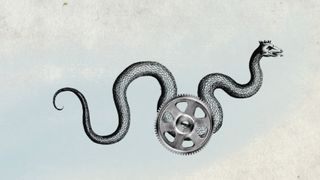What Effects Did The Battle Have On The Animals Individually And As A Group
Become started with animation in After Effects

Afterward Effects CC might sound like a complex program, but once you grasp some basic concepts, you'll exist able to create a range of animation styles using Adobe'due south 3D, motion graphics and blitheness software.
- Get Adobe Creative Cloud (opens in new tab)
In this article nosotros'll run through some top tips for animative illustrations in After Effects, starting with the basics. And be sure to bank check out other bully Later Furnishings tutorials for beginners, intermediate and experts after, for more applied tips and pattern inspiration.
01. Import files from Photoshop
Later Furnishings allows you to incorporate Photoshop files into your composition (comp). When you lot import these files into a projection, the layers will retain their individual qualities – only drag one onto the comp and it volition announced on the blitheness timeline.
02. Use keyframes
![Use the position attribute to move the element during keyframes [click the top-right arrows icon to enlarge this screenshot]](https://cdn.mos.cms.futurecdn.net/3wjaKahZTnRas4DagYvBkh.jpg)
Clicking the triangle adjacent to Transform volition show Position, Calibration, Rotation, and more. Each of these aspects is a keyframe – a location on the timeline that marks the offset or end of a transition. To add a keyframe, select which characteristic you want to alter and click forrard on the timeline.
The position, for case, can change from one keyframe to another past dragging it along the comp. When you play the animation, it volition travel along the path you created.
03. Smooth out transitions using easing
Easing tin make transitions between keyframes await less choppy by organically speeding up or slowing downwards the animation. Discover the Keyframe Assistant menu nether Animation to incorporate easing. Piece of cake Ease does what the name suggests by easing the element on both sides of the keyframe.
04. Suit anchor points
![Adjust the anchor points to ensure individual parts rotate in relation to one another [click the top-right arrows icon to enlarge this screenshot]](https://cdn.mos.cms.futurecdn.net/mgCUgHNVYb7KPryjbH4AZQ.jpg)
Parenting synchronises the changes of one layer with another layer's transformation. The cycle of a car, for example, would be the child layer of a vehicle'due south body, which is the parent. In this instance, every time the machine is moved, rotated or scaled, the cycle goes with it.
To assign the parent/child relationship, first make sure that your anchor points are correctly aligned. Remember about information technology like the skeleton of a figure – what are the joints? When something rotates, where volition it rotate from? Drag the anchor point to change its position.
05. Connect elements
![Click on the child element (the spiral) and drag the icon to its parent [click the top-right arrows icon to enlarge this screenshot]](https://cdn.mos.cms.futurecdn.net/mojpwEVWxnctYWoBFFRtXP.jpg)
Once these points are adamant, select the intended child chemical element and click the spiral icon nether Parent. Then, elevate it to the parent element and release – the two are now paired and any changes you make will touch on both parts of your new element.
06. Add together motion
![Use the Puppet Pins to assign movement to different parts of the image [click the top-right arrows icon to enlarge this image]](https://cdn.mos.cms.futurecdn.net/kEfc8sCJ66nB4WbktuzRfN.jpg)
The Puppet tool adds natural movement to a rasterised image. A serpent tin can bob its head while its tail shakes, for example, all with the placement of a few pins.
First, click on the triangle next to effects and select puppet. Nether it, yous'll come across Mesh 1. Click on the triangle adjacent to it to bring up the Deform menu. You'll at present exist able to click on the areas where you'd like to to add Puppet Pins – you can experiment with this until you get the effect you are looking for.
Once you've finished placing your pins, click forward on the timeline and use the Transform property to stretch or distort each private pin. Your puppeted subject will be moving in no time.
07. Export your animation
![Export your animated illustration [click the top-right arrows icon to enlarge this screenshot]](https://cdn.mos.cms.futurecdn.net/PH2Nm62Akc8tvBknuaiZof.jpg)
Once you're happy with your animation, export it. To consign an animation into a picture, get to File > Export > Add to return queue.
This article was originally published in Computer Arts magazine. Subscribe at present. (opens in new tab)
Related articles:
- twoscore amazing Subsequently Effects tutorials
- How to move over from Photoshop to Afterward Effects
- The beginner's guide to After Effects

Thank you for reading 5 articles this month* Bring together now for unlimited access
Enjoy your first month for just £1 / $1 / €one
*Read 5 free articles per month without a subscription

Bring together now for unlimited access
Attempt kickoff calendar month for but £ane / $one / €one
Related articles
Source: https://www.creativebloq.com/news/top-tips-for-creating-animations-in-after-effects
Posted by: marincamonwarld.blogspot.com

0 Response to "What Effects Did The Battle Have On The Animals Individually And As A Group"
Post a Comment